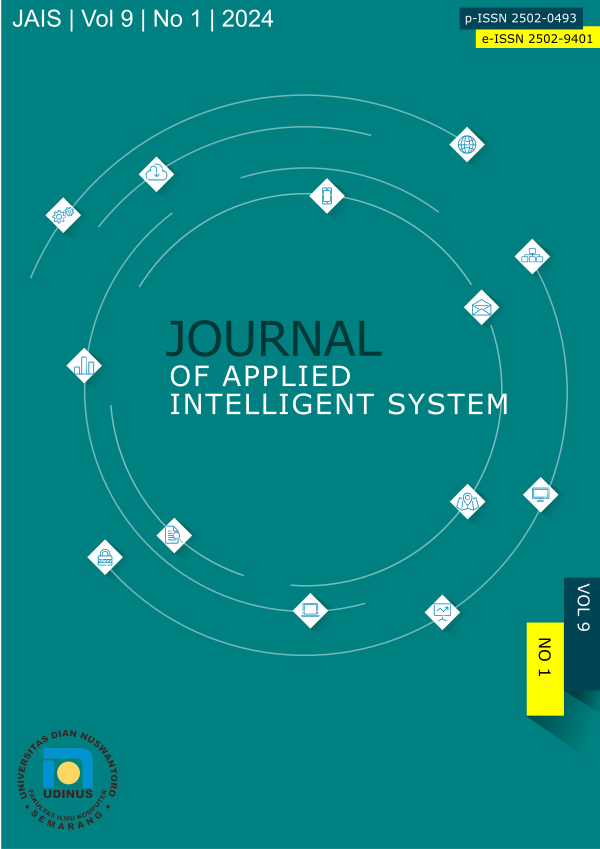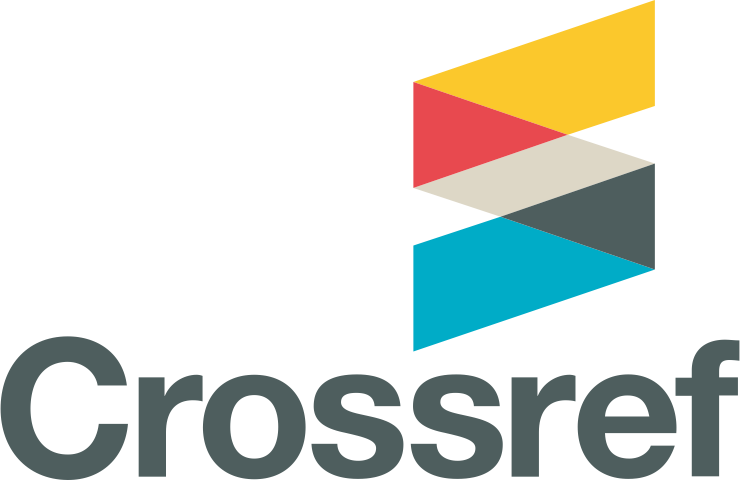Person Re-Identification Using CNN Method With Combination of SVM and Semantic Segmentation
DOI:
https://doi.org/10.62411/jais.v9i1.10345Abstract
Abstract – Person re-identification is a mechanized procedure of video investigation which has been widely studied in contemporary years. Research problems that are often raised in the field of a person's re-identification research are characteristic representations that are easily affected by closure (abhorrent to other objects). Furthermore, after extracting local features by means of a boundary box, the background image still contains and does not focus on the human body parts. This study comes up with a method combination of CNN, SVM classification, and semantic segmentation. CMC (Cumulative Matching Characteristics) and mAP (mean Average Precision) are measurements of assessment that will be utilized to measure the operation of re-identification. The ResNet + SVM + SSP-ReID technique performed best in the Market dataset, with a CMC increase of 3-10% (rank-1 through rank-20). The Market and CUHK03 (D) datasets both showed improvements of 1-4.1% in mAP. Keywords Person re-identification; Feature extraction; CNN; SVM; Semantic segmentation;References
X. Y. Jing et al., “Super-Resolution Person Re-Identification with Semi-Coupled Low-Rank Discriminant Dictionary Learning,” IEEE Trans. Image Process., vol. 26, no. 3, pp. 1363–1378, 2017, doi: 10.1109/TIP.2017.2651364.
L. Wu, Y. Wang, Z. Ge, Q. Hu, and X. Li, “Structured deep hashing with convolutional neural networks for fast person re-identification,” Comput. Vis. Image Underst., vol. 167, no. December 2016, pp. 63–73, 2018, doi: 10.1016/j.cviu.2017.11.009.
A. Bedagkar-Gala and S. K. Shah, “A survey of approaches and trends in person re-identification,” Image Vis. Comput., vol. 32, no. 4, pp. 270–286, 2014, doi: 10.1016/j.imavis.2014.02.001.
P. H. Tu et al., “An intelligent video framework for homeland protection,” Unattended Ground, Sea, Air Sens. Technol. Appl. IX, vol. 6562, p. 65620C, 2007, doi: 10.1117/12.729215.
K. Wang, H. Wang, M. Liu, X. Xing, and T. Han, “Survey on person re-identification based on deep learning,” CAAI Trans. Intell. Technol., vol. 3, no. 4, pp. 219–227, 2018, doi: 10.1049/trit.2018.1001.
L. Zheng, Y. Yang, and A. G. Hauptmann, “Person Re-identification: Past, Present and Future,” vol. 14, no. 8, pp. 1–20, 2016, [Online]. Available: http://arxiv.org/abs/1610.02984.
E. Poongothai and A. Suruliandi, “Survey on colour, texture and shape features for person re-identification,” Indian J. Sci. Technol., vol. 9, no. 29, 2016, doi: 10.17485/ijst/2016/v9i29/93823.
L. Bazzani, M. Cristani, and V. Murino, “Symmetry-driven accumulation of local features for human characterization and re-identification,” Comput. Vis. Image Underst., vol. 117, no. 2, pp. 130–144, 2013, doi: 10.1016/j.cviu.2012.10.008.
J. Yin, A. Wu, and W. S. Zheng, “Fine-Grained Person Re-identification,” Int. J. Comput. Vis., vol. 128, no. 6, pp. 1654–1672, 2020, doi: 10.1007/s11263-019-01259-0.
M. M. Kalayeh, E. Basaran, M. Gokmen, M. E. Kamasak, and M. Shah, “Human Semantic Parsing for Person Re-identification,” Proc. IEEE Comput. Soc. Conf. Comput. Vis. Pattern Recognit., vol. 227, pp. 1062–1071, May 2018, doi: 10.1016/S0140-6736(01)37157-X.
H. Fan, L. Zheng, C. Yan, and Y. Yang, “Unsupervised Person Re-identification: Clustering and Fine-tuning,” ACM Trans. Multimed. Comput. Commun. Appl., vol. 14, no. 4, pp. 1–18, 2018, doi: 10.1145/3243316.
X. Yang, Y. Tang, N. Wang, B. Song, and X. Gao, “An End-to-End Noise-Weakened Person Re-Identification and Tracking with Adaptive Partial Information,” IEEE Access, vol. 7, pp. 20984–20995, 2019, doi: 10.1109/ACCESS.2019.2899032.
H. Yao, S. Zhang, R. Hong, Y. Zhang, C. Xu, and Q. Tian, “Deep Representation Learning with Part Loss for Person Re-Identification,” IEEE Trans. Image Process., vol. 28, no. 6, pp. 2860–2871, 2019, doi: 10.1109/TIP.2019.2891888.
A. Krizhevsky, I. Sutskever, and G. E. Hinton, “ImageNet classification with deep convolutional neural networks,” Commun. ACM, vol. 60, no. 6, pp. 84–90, May 2017, doi: 10.1145/3065386.
I. Goodfellow, Y. Bengio, and · Aaron Courville, Deep Learning, vol. 91, no. 5. 2012.
M. Jaderberg, K. Simonyan, A. Zisserman, and K. Kavukcuoglu, “Spatial transformer networks,” Adv. Neural Inf. Process. Syst., vol. 2015-Janua, pp. 2017–2025, 2015.
R. R. Varior, M. Haloi, and G. Wang, “Gated siamese convolutional neural network architecture for human re-identification,” Lect. Notes Comput. Sci. (including Subser. Lect. Notes Artif. Intell. Lect. Notes Bioinformatics), vol. 9912 LNCS, pp. 791–808, 2016, doi: 10.1007/978-3-319-46484-8_48.
W. Zhong, L. Jiang, T. Zhang, J. Ji, and H. Xiong, “Combining multilevel feature extraction and multi-loss learning for person re-identification,” Neurocomputing, vol. 334, pp. 68–78, 2019, doi: 10.1016/j.neucom.2019.01.005.
Y. Zhang, B. Li, H. Lu, A. Irie, and X. Ruan, “Sample-specific SVM learning for person re-identification,” Proc. IEEE Comput. Soc. Conf. Comput. Vis. Pattern Recognit., vol. 2016-Decem, pp. 1278–1287, 2016, doi: 10.1109/CVPR.2016.143.
M. M. Kalayeh, E. Basaran, M. Gokmen, M. E. Kamasak, and M. Shah, “Human Semantic Parsing for Person Re-identification,” Proc. IEEE Comput. Soc. Conf. Comput. Vis. Pattern Recognit., vol. 227, pp. 1062–1071, 2018, doi: 10.1109/CVPR.2018.00117.
L. Zheng, Y. Huang, H. Lu, and Y. Yang, “Pose-Invariant Embedding for Deep Person Re-Identification,” IEEE Trans. Image Process., vol. 28, no. 9, pp. 4500–4509, 2019, doi: 10.1109/TIP.2019.2910414.
Y. Zheng, H. Sheng, Y. Liu, K. Lv, W. Ke, and Z. Xiong, “Learning irregular space transformation for person re-identification,” IEEE Access, vol. 6, pp. 53214–53225, 2018, doi: 10.1109/ACCESS.2018.2871149.
W. Wang, J. Shen, and L. Shao, “Deep Learning For Video Saliency Detection,” IEEE Trans. Image Process., vol. 27, no. 1, pp. 38–49, 2018, doi: 10.1109/TIP.2017.2754941.
K. Gong, X. Liang, D. Zhang, X. Shen, and L. Lin, “Look into Person: Self-supervised Structure-sensitive Learning and a new benchmark for human parsing,” Proc. - 30th IEEE Conf. Comput. Vis. Pattern Recognition, CVPR 2017, vol. 2017-Janua, pp. 6757–6765, 2017, doi: 10.1109/CVPR.2017.715.
R. Quispe and H. Pedrini, “Improved person re-identification based on saliency and semantic parsing with deep neural network models,” Image Vis. Comput., vol. 92, 2019, doi: 10.1016/j.imavis.2019.07.009.
M. O. Almasawa, L. A. Elrefaei, and K. Moria, “A Survey on Deep Learning-Based Person Re-Identification Systems,” IEEE Access, vol. 7, pp. 175228–175247, 2019, doi: 10.1109/ACCESS.2019.2957336.
K. He, X. Zhang, S. Ren, and J. Sun, “Deep residual learning for image recognition,” Proc. IEEE Comput. Soc. Conf. Comput. Vis. Pattern Recognit., vol. 2016-Decem, pp. 770–778, 2016, doi: 10.1109/CVPR.2016.90.
C. Ding, T. Bao, and H. Huang, “Quantum-Inspired Support Vector Machine,” pp. 1–13, 2021.
Downloads
Published
Issue
Section
License
Copyright (c) 2024 Kristian Adhi Kurniawan, Moch Arief Soeleman

This work is licensed under a Creative Commons Attribution-NonCommercial 4.0 International License.
- Authors retain copyright and grant the journal right of first publication with the work simultaneously licensed under a Creative Commons Attribution License that allows others to share the work with an acknowledgment of the work's authorship and initial publication in this journal.
- Authors are able to enter into separate, additional contractual arrangements for the non-exclusive distribution of the journal's published version of the work (e.g., post it to an institutional repository or publish it in a book), with an acknowledgment of its initial publication in this journal.
- Authors are permitted and encouraged to post their work online (e.g., in institutional repositories or on their website) prior to and during the submission process, as it can lead to productive exchanges, as well as earlier and greater citation of published work (See The Effect of Open Access).









